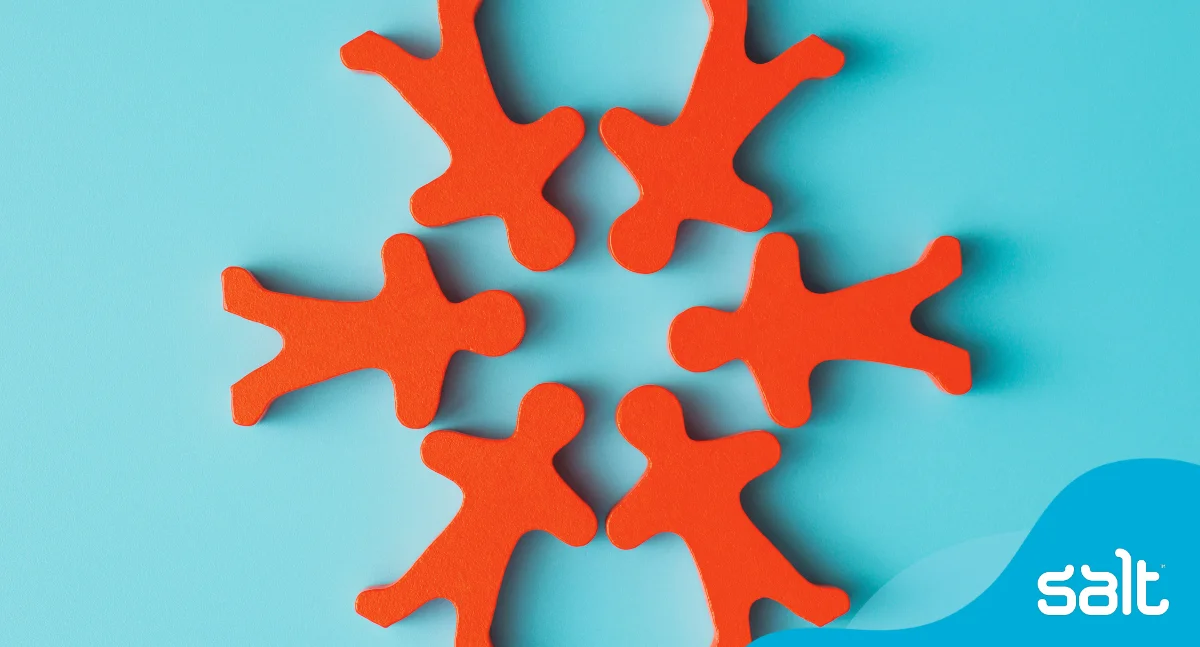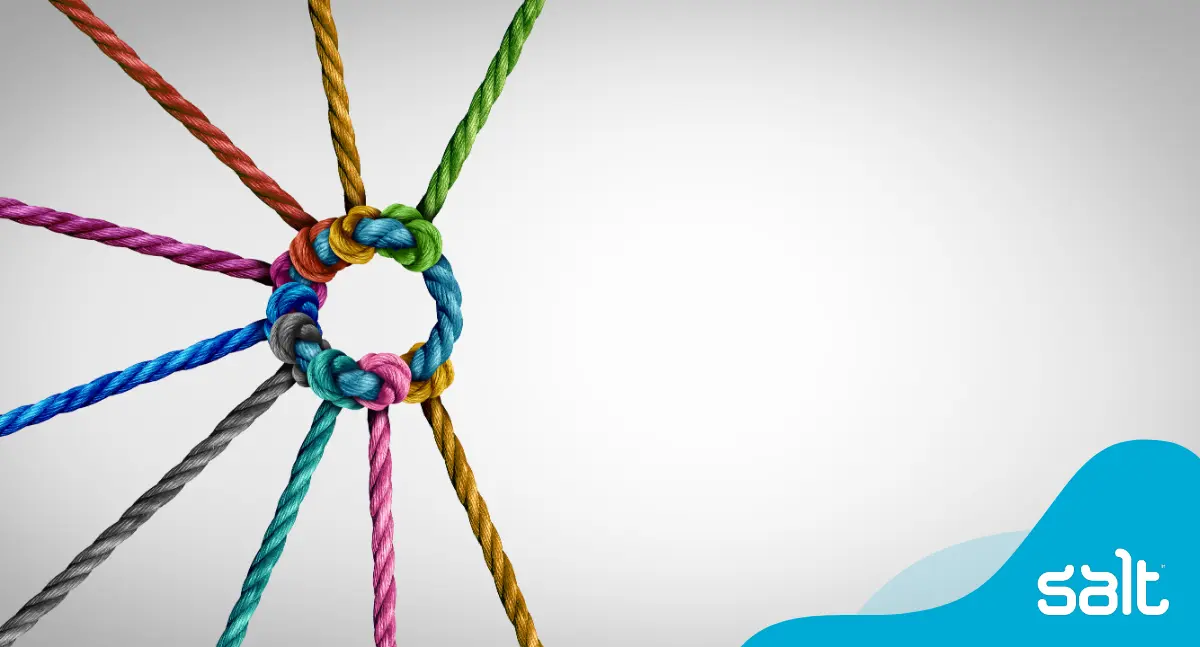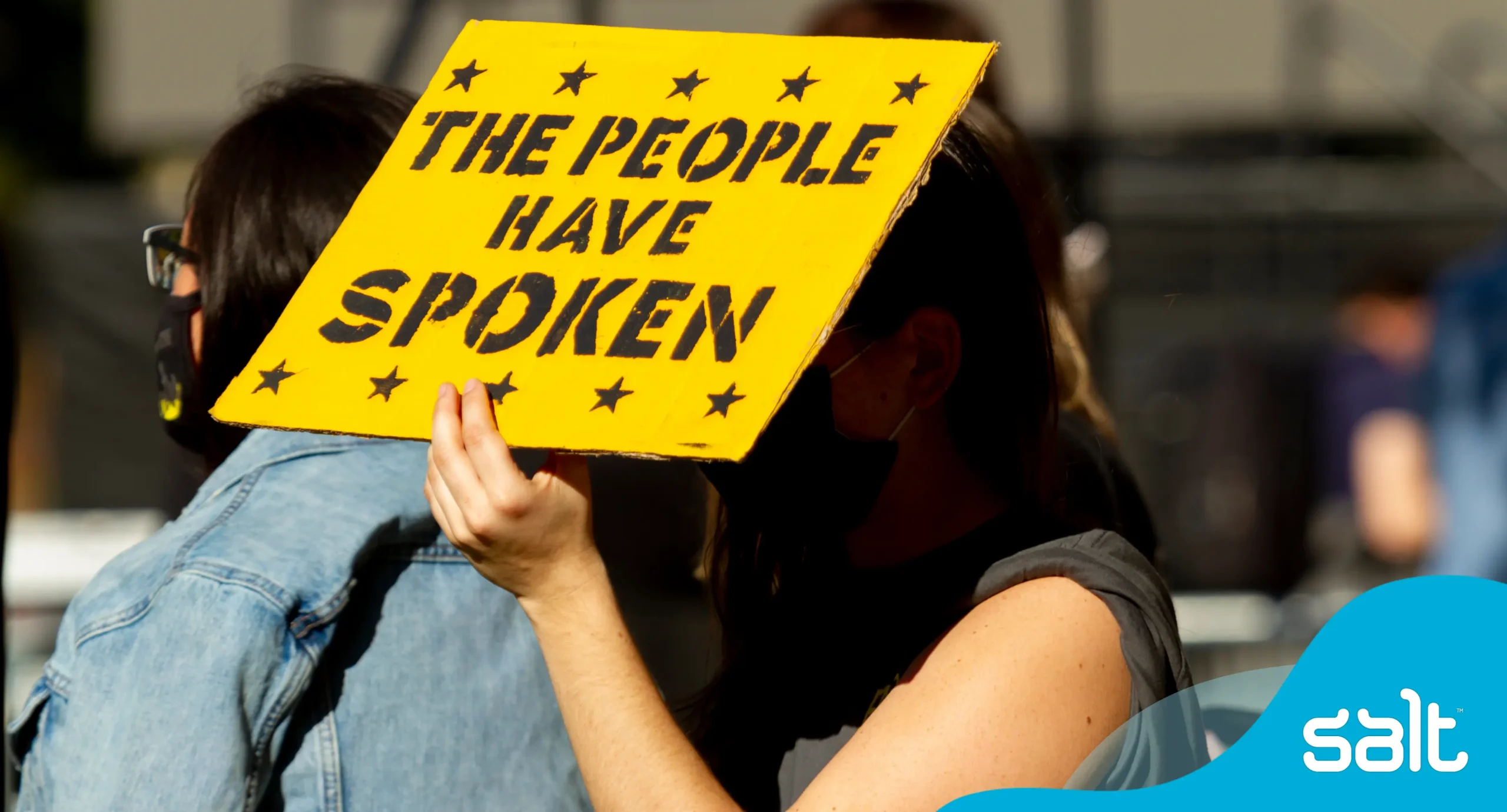
This is the most age-diverse workforce in history. Building high-performing, multi-generational teams benefits your business now and in the future.
People from every corner of the globe grow up with inherent beliefs about being ‘before’ or ‘past’ our primes. We project beliefs about those ‘older’ and ‘younger’ than ourselves throughout our lifetimes, as we ourselves age. This relative experience makes up the shared concept of ‘generational difference’ that is the basis of so much mainstream comedy, family drama and indeed, workplace biases.
Age has been proven to have no impact on intelligence, capability, technological ability or performance. While unfounded, age-based biases actually go on to have a real impact.
1 in 2 people worldwide are thought to have ageist beliefs. However, the belief that different age groups can’t work together is baseless. In fact, age-diverse teams are proven to be more productive! Here we will showcase how building age diverse, multi-generational teams improves performance and reduces employee turnover. We’ll also show how each of these benefits to building multi-generational teams, unlike age-based biases, are backed by science.
The benefits of multi-generational teams
There are lots of benefits to more diversity in your teams overall, but building age-diverse teams does come with a set of specific benefits as you’re including the perspectives and insights of multiple generations in your decision-making, process planning and delivery.
Benefits of multi-generational, age-diverse teams include:
- More innovation and inclusive thinking thanks to having different viewpoints and life experiences.
- Knowledge sharing from different industries and skill sets that empower interpersonal learning.
- Improved collaboration and communication as different members seek to be inclusive.
- Cultivating organic mentoring environments to upskill workers and increase confidence.
- Building stronger workforce sustainability, loyalty and consistency as a whole.
- Encouraging value and learning exchanges that increase emotional and cultural intelligence.
- A positive impact to market, customer and brand reputation.
When biases are effectively managed through interruption and education – multi-generational teams can flourish, increasing productivity now, and building a sustainable workforce for future economic conditions.
In the Australian Human Rights Commission report – What’s age got to do with it? – they found that rather than resenting and judging each other, which is a common belief about age groups interacting, different generations actually really benefit from working together: “while there was some evidence of tensions between generations, the findings revealed a real understanding of the life issues faced by those of other age groups, coupled with a desire to support them”.
To quote the previous Age Discrimination Commissioner of Australia, Dr Kay Patterson: “We are more alike than we are different.”
Why multi-generational teams improve customer service
Ageism in the workplace is an issue that extends to your customers and ultimately impacts your performance. When building a workforce, it is essential to think about your target audience and the diverse perspectives and needs of different age groups.
Ignoring age diversity can also lead to missed opportunities. For example, if a company is selling financial services across a range of demographics and only exclusively hires from one limited age range, they may exclude individuals who represent a significant segment of their customer base.
Boston Consulting Group (BCG)‘s study of 12 markets shows that the 870 million people aged 50 to 70 years old are responsible for 27% of spending. In nations such as Japan, UK, Germany, and Spain, it’s as high as 40%. That means that this demographic is responsible for spending around $7 trillion each year, whilst also being the group most discriminated against by age-related discrimination in the workplace.
By fostering age diversity in your hiring strategy, you are also positioning yourself better to understand and reflect your customers.
Why multi-generational teams enhance innovation and creativity
Companies with diverse age range are 1.7 times more likely to be innovation leaders in their market, according to a report KPMG. This is due to the unique blend of fresh ideas from younger employees and the wisdom and experience provided by older employees. Multi-generational teams offer a mix of experience and fresh perspectives.
In these teams, people across diverse age groups contribute their knowledge, expertise and innovative approaches. A study conducted by Forbes also highlighted the stimulating effect of multi-generational teams on innovation and creativity. It found that the varied life experiences and viewpoints by different generations can spark creative solutions.
Creativity and innovation within the diverse range group should also be in response to evolving technological trends. With the rise of automation and Generative AI in the workplace, leaders will need to develop skillsets that faciliate both creativy and innovation across a diverse range of teams for a diverse audience. Taking advantage of emerging technology.
This underscores the importance of fostering diverse age groups within teams to enhance creativity and innovation in response to evolving technological trends such as AI.
Why multi-generational teams increase productivity
Studies by the OECD show older workers to be as productive as their ‘prime-age’ counterparts, and that age diversity has a positive impact on both younger and older age groups: with both working more productively in an age-diverse environment than with peers of the same age.
According to a study by the Society for Human Resource Management (SHRM), workers of different age groups bring unique strengths. From strong problem-solving abilities and leadership skills, and adaptability to change. This blend of skills can enhance productivity and efficiency in the workplace.
With global skill demands evolving rapidly, the World Economic Forum have reported that “as people live and work longer, a new mindset is required to develop skillsets over extended periods and through various phases of an individual’s life to ensure sustained contributions to the workforce”.
By developing the skills needed for the future of work across generations of workers you can address evolving skills faster and build resilience.
Why multi-generational teams are better at problem-solving
Statistically, age-diverse teams perform significantly better, delivering improved business outcomes in close to 90% of cases. That’s for at least two reasons: they have far more intellectual capital and reduce negative age-related bias, increasing employee engagement.
Cloverpop puts the average number of decisions made by managers at just 1-2 a week, with the ability to juggle just 5-6 decisions at a time. Due process aside, as hard as some choices are to make, the wrong decision also sets teams or organisations back, and requires more work. More voices with diverse experiences being counted as part of decision making is proven to lead to better decision-making, with age and gender diverse teams reported to make decisions better 80% of the time! The more diversity represented, the better the decision-making process.
Why multi-generational teams improve knowledge sharing
Having generational diversity within a team creates an environment where employees of different ages can work with and learn from each other, exchanging skills and perspectives that strengthen both now and in the future.
Employees in mentoring roles within their organisation often feel a higher sense of loyalty and engagement, studies show. Mentoring, particularly with emergent technologies and fast-paced digital change disrupting the working landscape, is now more than ever a two-way street: with mentors learning from their mentees. Cross-generational and reverse mentoring builds bonds across teams and age groups while also addressing skills gaps and age-based biases.
Why multi-generational teams enhance employee engagement
A diverse and inclusive work environment promotes open communication, more equal opportunities, and a sense of belonging that benefits every member of your team.
Employees in age-diverse teams tend to have higher levels of engagement and job satisfaction, and a lower overall rate of turnover, which allows retained team members to upskill new members and progress projects even after others move on to new opportunities.
Research from the National Australia Bank (NAB) shows 9 out of 10 (89%) people prefer to work with colleagues of different ages, despite their differences in opinion on management preferences, communication styles and career progression:
- 86% believe collaboration with other age groups is beneficial
- 85% say it drives innovation.
A survey conducted by Deloitte revealed that companies with inclusive cultures were more likely to see increased employee engagement and reduced turnover rates.
Conclusion:
Your workforce can benefit in so many ways from diversity and multi-generational teams – but only if biases are addressed. It is clear that age-based biases are unfounded and hinder productivity, whereas embracing diversity leads to stronger, more sustainable workforces. It is crucial for businesses to recognise the value of age diversity and actively foster an inclusive work environment.
Discover more job market insights from Salt Recruitment here!
Hiring? Salt connects you to outstanding top talent worldwide
If you’re interested in hearing about how Salt’s top talent recruitment experts around the world can help with your hiring right now, get in touch. Click below to contact the closest Salt team to you!
- Australia
- Canada
- Belgium
- Europe
- Hong Kong
- Malaysia
- Middle East and North Africa
- Netherlands
- New Zealand
- Singapore
- South Africa
- United Kingdom
- United States
Keep up with Salt’s top talent job market insights and hiring advice! You can keep in the loop by following us on. LinkedIn, YouTube, Facebook, Instagram, and Spotify.




